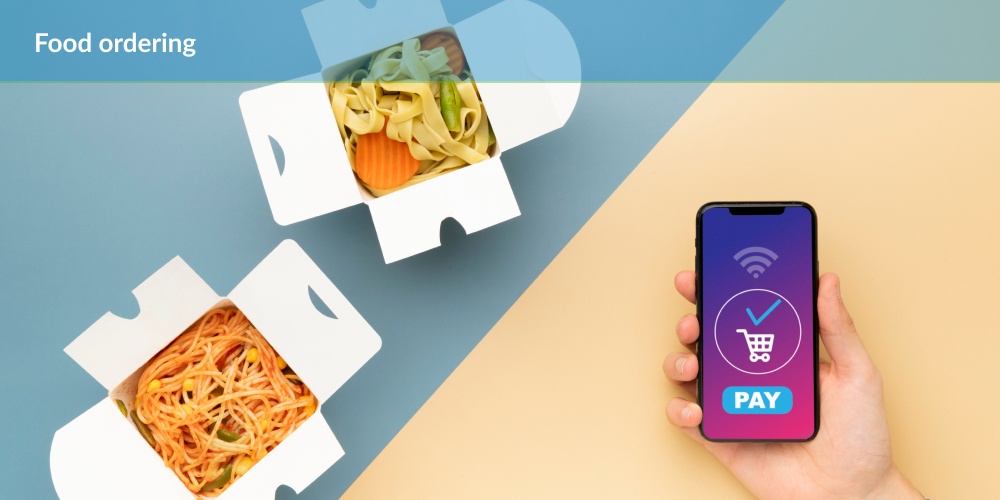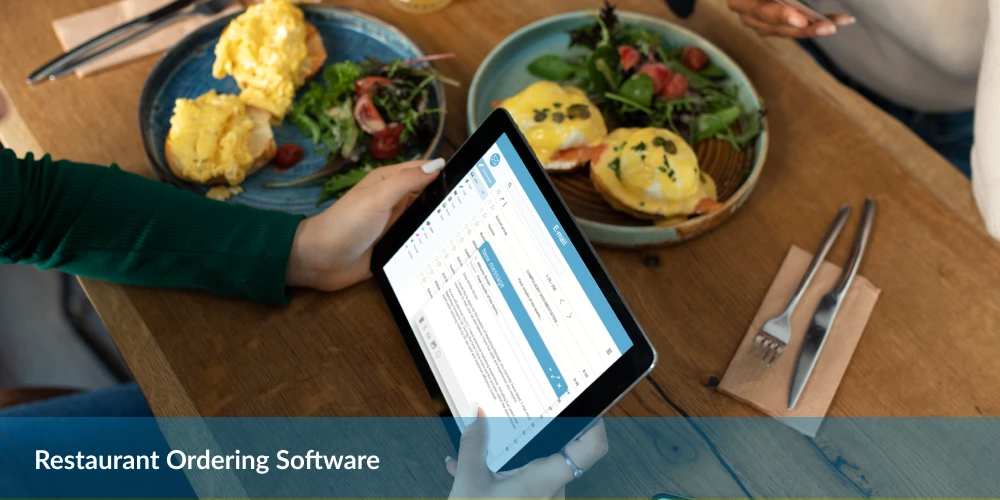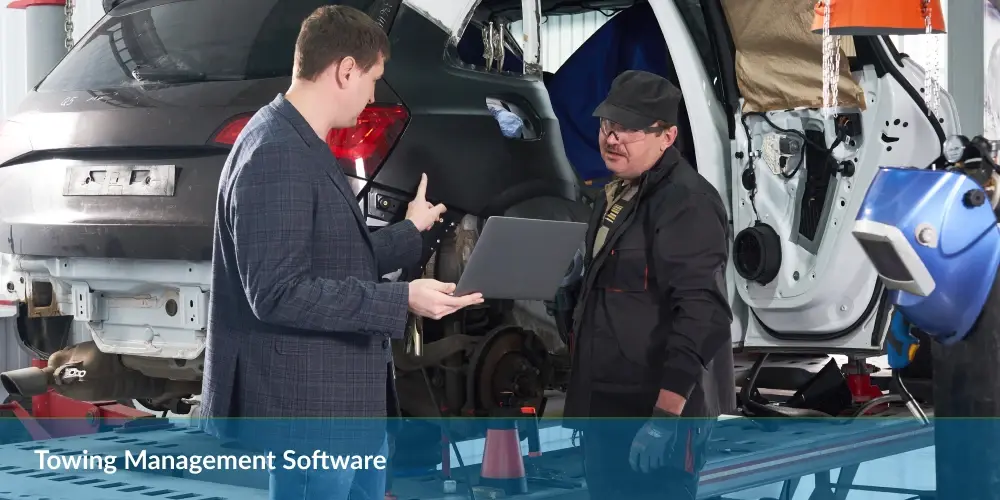Table of Contents
Have you ever imagined how the way we order food has significantly transformed in recent years? With the rise of technology, food order preferences and food-ordering apps have become an integral part of our culinary landscape.
Well, those days are long gone when we rummaged through drawers for takeout menus and dialed up our favorite restaurant, only to be put on hold. It’s all because of the food-ordering online app that’s taken our love for convenience to delicious new heights. The food order delivery app has transformed how we order our preferred food, giving the entire restaurant industry a massive tech-flavored makeover.
And it doesn’t end there; even buying groceries has become easier with these apps. The variety of foods we can order easily is like a colorful mosaic of different cuisines.
So, let’s delve into the evolution of food order, focusing on the emergence of these apps and their profound impact on how we experience and enjoy food.
Evolution of Food Ordering
To understand the dominance of food order services in the present, we must first glance back at the past. Food delivery services have a long history, dating back to ancient civilizations where messengers were employed to deliver meals. However, in the late 20th century, the concept gained traction with the advent of pizza delivery services that delivered pizza to people with minimal effort and at their doorstep.
The dawn of the digital age revolutionized how we interact with food. With the widespread adoption of smartphones and the Internet, ordering food has become more convenient than ever. People no longer had to rely solely on telephone orders or physically visiting restaurants; they could tap their screens and have food delivered to their doorstep.
Platforms such as Uber Eats, DoorDash, and Grubhub revolutionized how we order and experience food. These apps quickly gained popularity, offering various cuisines at our fingertips, capitalizing on convenience and choice. Their user-friendly interfaces and seamless payment systems further propelled their rapid growth, reshaping the food industry as we know it.
To better understand, let’s delve deeper into the impact of food-ordering apps on consumer behavior, restaurant dynamics, and the broader culinary landscape.
Convenience vs. Experience
Food order online apps have undoubtedly revolutionized how we access food, placing convenience at the forefront of the dining experience. With just a few taps on a smartphone, users can browse many restaurant options, customize their orders, and have meals delivered right to their doorstep. This convenience, however, often comes at the expense of the traditional dining experience.
Gone are the days of leisurely meals spent in a restaurant ambiance, replaced by the quick and efficient ordering process. While this shift caters to our fast-paced lifestyles, it also raises questions about the social and cultural significance of dining out.
The rise of food order delivery apps has profoundly impacted the dynamics of the restaurant industry. On one hand, it has provided restaurants with a new avenue to reach customers and increase sales. Smaller establishments needing more in-house delivery resources can now leverage these platforms to expand their reach.
However, the dominance of food ordering apps has also increased competition and pressure on restaurants to adapt to the digital age. Many establishments have had to invest in technology and logistics to stay relevant in an increasingly app-driven market, reshaping the traditional restaurant model.
As we embrace the convenience offered by food order service apps, we must consider how to maintain the quality of dining experiences. While the speed and efficiency of app-based ordering are appealing, they often need a more personal touch and ambiance from dining in a restaurant.
Finding a balance between convenience and experience is crucial to ensuring that we don’t sacrifice the joys of communal dining and human interaction. Restaurants can strive to offer unique experiences, whether through special menus, themed events, or personalized service, to differentiate themselves in a crowded market.
Diversity and Accessiblity
One of the most significant benefits of food order apps is their vast culinary options. From traditional favorites to exotic cuisines, users can explore diverse food experiences without leaving their homes. These apps have democratized access to food, allowing users to discover new flavors and cuisines that may not be readily available in their local area.
Whether craving sushi, tacos, or vegan fare, there’s something for everyone on these platforms, promoting culinary diversity and exploration.
Food order delivery apps have also been instrumental in catering to individuals with dietary restrictions or specific preferences. Whether gluten-free, vegetarian, or halal, users can easily filter and find options that meet their dietary needs.
This level of customization and accessibility was previously unheard of, empowering individuals to make informed choices about their food consumption. Moreover, it fosters inclusivity by ensuring everyone can participate in the dining experience, regardless of their dietary restrictions or preferences.
While food ordering apps offer significant opportunities for restaurants to expand their reach, they also present challenges, particularly for small and local establishments. These restaurants may need help competing with larger chains and national brands with greater resources and visibility on these platforms.
Additionally, the commission fees charged by food ordering apps can eat into already slim profit margins, posing financial challenges for smaller businesses.
With food order apps, small and local restaurants have opportunities to thrive in the app-driven market.
- They can leverage their unique offerings to attract customers.
- Fostering customer loyalty is crucial for their success.
- Collaborating with other local businesses can help amplify their presence in the market.
Technology and Innovation
Continuous technological advancements have propelled the evolution of food-ordering apps. From improved user interfaces to seamless payment systems, these apps have transformed how we access and enjoy food.
There is a notable advancement is the integration of GPS technology, such as:
- It enables real-time tracking of delivery orders
- Provides users with accurate ETAs.
- Enhances overall transparency of food order services.
Additionally, advancements in cloud computing and logistics optimization have enabled food ordering apps to manage large volumes of orders and streamline delivery operations efficiently.
Integrating AI, Machine Learning, and data analytics is pivotal in enhancing user experiences on food order delivery apps. These technologies enable apps to personalize recommendations based on user preferences, order history, and location data, creating a more tailored and engaging experience.
By analyzing vast amounts of data, apps can also optimize delivery routes, predict peak ordering times, and manage inventory more efficiently, ultimately improving operational efficiency and customer satisfaction.
The food tech industry is poised for further innovation and disruption. One emerging trend is adopting augmented reality (AR) and virtual reality (VR) technologies to enhance the online ordering experience.
Imagine visualizing menu items in 3D or virtually exploring a restaurant’s ambiance before placing an order. Additionally, advancements in robotics and automation may revolutionize food preparation and delivery processes, reducing costs and increasing speed and accuracy.
Furthermore, the rise of smart kitchen appliances and IoT devices holds promise for enabling seamless integration between home cooking and online ordering, blurring the lines between homemade meals and restaurant dining.
Social and Cultural Impacts
While food ordering apps offer unparalleled convenience, they also affect social dining experiences. The rise of food delivery and takeout options has made it easier for people to enjoy meals in the comfort of their own homes, potentially reducing opportunities for communal dining and social interaction.
This shift may have positive and negative consequences, as it allows for greater flexibility and convenience but also risks eroding the social fabric of dining out.
The widespread adoption of food ordering apps has led to changing norms and behaviors related to dining out. With the ability to order food anytime, anywhere, people are no longer bound by traditional dining hours or locations. This has led to a rise in spontaneous dining decisions and a shift towards on-demand consumption patterns.
Additionally, the rise of food delivery has prompted restaurants to rethink their business models, with many establishments focusing more on takeout and delivery options to cater to changing consumer preferences.
Food order apps have also significantly impacted culinary tourism and cultural exchange. These apps have democratized culinary exploration and encouraged cultural exchange by providing worldwide access to various cuisines. Users can now sample authentic dishes from different regions and cultures without leaving home, fostering greater appreciation and understanding of global culinary traditions.
Additionally, the rise of food delivery has made it easier for travelers to indulge in local delicacies while on the go, enriching their culinary experiences and supporting local economies.
Economic Considerations
The rise of food order delivery apps has brought about significant economic implications for restaurants and delivery workers. On one hand, restaurants can benefit from increased sales and reach by partnering with these platforms. However, they also face challenges such as high commission fees and increased competition, which can impact their profitability.
On the other hand, delivery workers may enjoy flexibility and earning opportunities through gig work but also face low wages, lack of benefits, and job insecurity. Balancing the economic interests of all stakeholders is crucial for building a sustainable and equitable food ecosystem.
Food ordering apps have led to a shift in pricing strategies and consumer behavior. Restaurants may adjust their pricing to account for commission fees charged by the apps, potentially leading to higher menu prices for customers.
The convenience and transparency offered by these platforms may influence consumer decisions, with factors such as delivery fees, discounts, and reviews playing a significant role in shaping purchasing behavior. Understanding these dynamics is essential for restaurants and app developers to optimize pricing strategies and enhance user experiences.
The disruption caused by food ordering apps extends beyond individual restaurants to impact the broader economy. Traditional restaurant models are being challenged as more consumers opt for delivery and takeout options over dining in. This shift can have ripple effects on various sectors, including commercial real estate, urban planning, and employment.
The rise of gig work in the delivery sector raises questions about labor rights, income inequality, and the future of work. Adapting to these changes will require innovative solutions and collaborative efforts from stakeholders across the economy.
Challenges and Concerns
One of the foremost challenges associated with food order apps is food waste and environmental sustainability. The convenience of on-demand delivery can lead to increased packaging waste and carbon emissions, exacerbating environmental concerns.
The abundance of choices and promotions on these platforms may encourage overconsumption and contribute to food waste at both the consumer and restaurant levels. Addressing these issues requires collective action from restaurants, delivery platforms, policymakers, and consumers to promote sustainable practices and minimize environmental impact.
The gig economy model employed by many food delivery apps raises ethical considerations regarding worker rights and fair labor practices. Delivery workers often lack job security, benefits, and legal protections afforded to traditional employees, leading to concerns about exploitation and precarious working conditions.
Furthermore, relying on algorithmic management and rating systems can exacerbate power imbalances between workers and platforms. Upholding ethical standards and ensuring dignity and fair treatment for all workers should be a priority in developing and regulating food delivery services.
Governments face regulatory challenges in navigating the complex landscape of food order online apps. Issues such as labor rights, consumer protection, and market competition require robust regulatory frameworks to safeguard the interests of all stakeholders.
However, effectively regulating these platforms while promoting innovation and competition presents a delicate balancing act. Collaboration between public authorities, industry stakeholders, and civil society is essential to developing inclusive and effective regulatory solutions.
Governments worldwide are grappling with these challenges and exploring various policy responses, such as:
- Labor reforms
- Antitrust measures
- Environmental regulations
Key Takeaways
- Food ordering apps have revolutionized how we access food, offering unparalleled convenience and choice.
- The rise of food delivery services has reshaped the dynamics of the restaurant industry, presenting businesses with both opportunities and challenges.
- Technology and innovation, such as GPS tracking and AI personalization, have played a pivotal role in enhancing the user experience of food ordering apps.
- Food ordering apps have significant social, cultural, and economic impacts, affecting dining habits, culinary exploration, and labor practices.
- Addressing food waste, environmental sustainability, and worker rights is crucial for building a sustainable and equitable food ecosystem.
- Governments worldwide are grappling with regulatory challenges to ensure food ordering apps’ fair and ethical operation while fostering innovation and competition.
Conclusion
While food order online apps offer unprecedented convenience and choice, they also raise significant economic, social, and environmental considerations that must be addressed to build a more sustainable and equitable food ecosystem. By fostering collaboration and innovation, we can harness the potential of technology to create positive change and ensure that everyone benefits from the evolving culinary landscape. To understand that, a few factors need to be considered as well.
- Understanding consumer preferences is crucial for food ordering apps to tailor their services effectively.
- Consumers prioritize convenience, variety, and value when using these apps.
- Users appreciate features like easy navigation, quick checkout, and personalized recommendations.
- Factors such as delivery speed, order accuracy, and customer service influence user satisfaction and loyalty.
- Reviews and ratings are crucial in shaping consumer choices on food ordering apps.
As food order apps reshape the culinary landscape, you, an enthusiast food business owner, must collaborate with NetworkON and address emerging challenges. This includes promoting sustainable practices, ensuring fair labor standards, and fostering inclusivity and diversity. We can harness technology’s potential to create a more sustainable, equitable, and enjoyable food ecosystem by working together.
To learn more about NetworkON, contact us at info@networkon.io or visit our website today.
Frequently Asked Questions
While food ordering apps provide opportunities for small and local restaurants to expand their reach, they also present challenges. These include high commission fees, increased competition, and the need to invest in technology and logistics. Collaborating with other local businesses and fostering customer loyalty are strategies to thrive in this app-driven market.
The convenience of on-demand food delivery can increase packaging waste and carbon emissions, contributing to environmental concerns. Additionally, overconsumption and food waste may occur due to the abundance of choices and promotions on these platforms. Addressing these issues requires collective action to promote sustainable practices and minimize environmental impact.
Food order online apps prioritize convenience, allowing users to order from a wide range of restaurants with just a few taps. While this enhances accessibility, it can diminish the traditional dining experience, as meals are often consumed at home rather than in a restaurant. However, some establishments are adapting by offering unique dining experiences to maintain customer engagement.
Governments worldwide are grappling with regulatory challenges related to labor rights, consumer protection, and market competition. Developing robust regulatory frameworks while promoting innovation and competition is crucial. Measures such as labor reforms, antitrust measures, and environmental regulations are being explored to ensure fair and ethical operation of food ordering apps.





0 Conversations